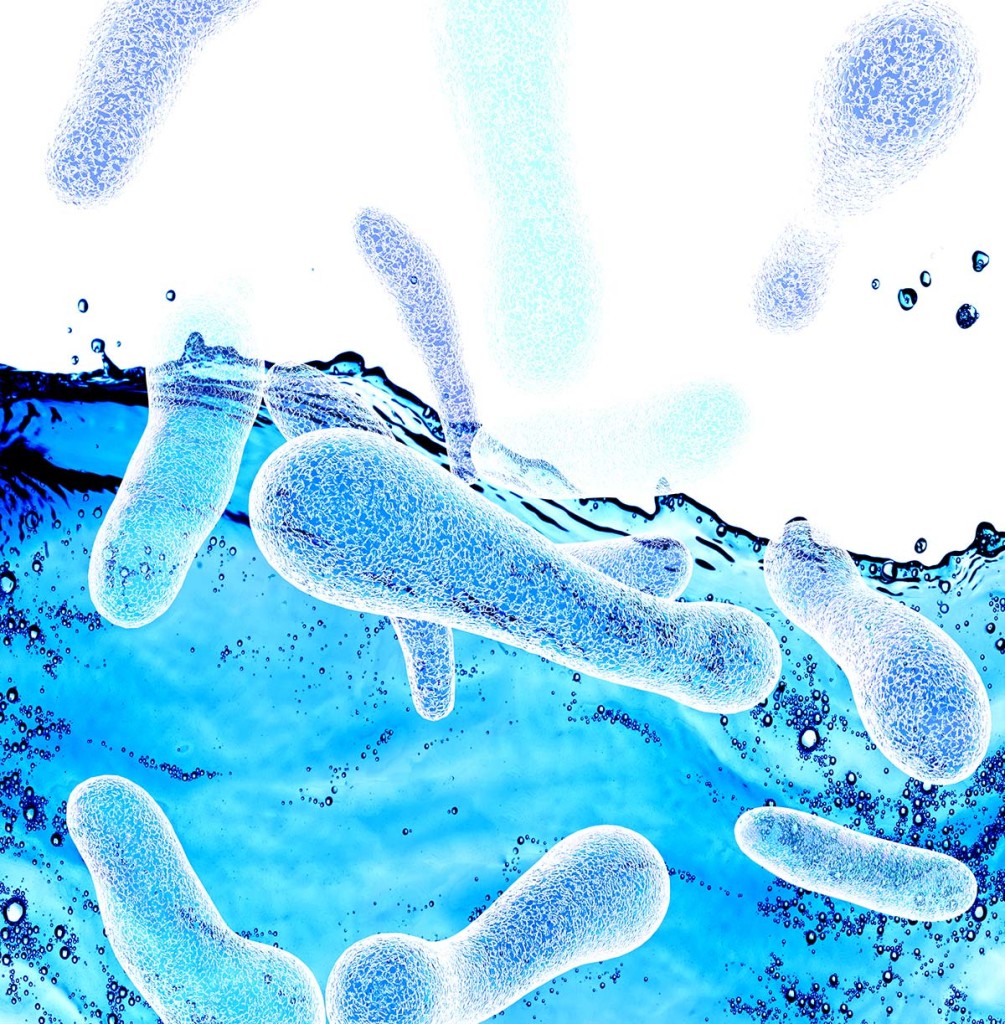
Remove Deposits in All Pipes to Inhibit Legionella pneumophila growth
Legionella pneumophila (legionella), the bacteria responsible for Legionnaires’ disease or legionellosis, occurs naturally in the environment, generally causing little problem. It becomes a public health risk problem when allowed to grow in building water systems, where it infects and multiplies within free-living amoebae. Conditions contributing to the growth of legionellae include water temperatures between 25 and 42 oC (77-108 oF), and sediments, scale and biofilms that harbor the amoebae. Below 20 oC, (68 oF) the bacteria simply lies dormant, waiting for warmer conditions. Temperatures above 60 oC (140 oF) are required to kill the bacteria. Building water systems cannot sustain such high temperatures due to the risk of scalding, so conditions are often optimal for legionella’s growth.
Within these deposits (sediment, scales and biofilms), the bacteria colonize water cooling towers, large plumbing systems, decorative fountains, hot water tanks, and hot tubs, subsequently entering the water. Infection in humans can occur when they aspirate the water into their lungs, or, more rarely, from inhaling water mists containing the bacteria. It is a serious health threat, with over 8,000 to 10,000 reported cases a year. However, due to underreporting, the Center for Disease Control (CDC) estimates the true infection rate may be as high as 100,000 per year, perhaps causing death in as many as 8,000 in the United States alone. This is more than twice the number of deaths from food borne illnesses.
Even with new guidance, recent outbreak leaves building managers with treatment questions
The confirmed host environments for the outbreak in New York City, which afflicted over 120 people and resulted in death for 12, are several water-cooling towers. In response, New York City Council adopted Section 7.2: Cooling Towers and Evaporative Condensers, of the newly released ANSI/ASHRAE Standard 188-2015, Legionellosis: Risk Management for Building Water Systems. The new City regulation calls for the inspection and, if needed, disinfection, of water-cooling towers throughout the City.
ANSI/ASHRAE Standard 188-2015 provides guidance for the development of a risk management plan aimed at identifying risk points and developing standard operating procedures for monitoring and maintaining those risk points. The guidance does not provide details on the effective treatments for preventing Legionella bacteria responsible for the disease. Building managers must still determine the proper treatment to combat the bacteria and prevent reoccurrence.
Emergency and remedial disinfection alone cannot prevent recolonization
Many treatments for legionella, such as super heating the water and shock chlorination, cannot be maintained long term and are often only effective for a few days. Treatments such as ozone, UV, and chlorine dioxide, while addressing the new water, do nothing to address the scales and biofilms in pipes and towers. When scale and biofilms are left intact, conditions are soon right and again the legionella colonies thrive.
Effective prevention begins with removing scale and biofilms
Blue Earth Products provides a simple prevention system that removes the scale and biofilms that harbor legionella. Clearitas works by actually attacking the organic “glue” that holds the organic infused scale and biofilm together, breaking them down and flushing them out of the system. Removing these habitats from piping and equipment removes the food sources, leaving legionella no place to grow, no place to hide.
Then prevent recolonization to eliminate risk
Once the Clearitas removes these deposits, it can be used to prevent re-deposition. Dosage determines the rate of deconstruction, so applying Clearitas at a higher dose breaks down existing deposits to remediate an infected water system. Once the system is clean, a lower maintenance dose prevents scale and biofilm from reforming, preventing recolonization, and eliminating risk.
Safe, simple to use, Clearitas makes prevention easy
Clearitas is certified under NSF Standard 60, Clearitas is safe for drinking water.
Often, application may be as simple as connecting a chemical dosing pump discharging to convenient entry points. Our water system experts at Blue Earth Products can help you evaluate your needs and set up your prevention program. We can help you:
- Assess your system
- Determine risk points
- Determine the best method of applying Clearitas
- Set up remediation dosing for removal of scales and biofilms
- Set up maintenance dosing for ongoing prevention.

